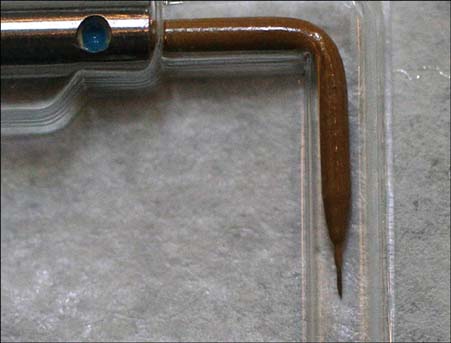Ann Dermatol.
2010 Aug;22(3):367-369. 10.5021/ad.2010.22.3.367.
Syringomas Treated by Intralesional Insulated Needles without Epidermal Damage
- Affiliations
-
- 1Department of Dermatology, Busan Paik Hospital, College of Medicine, Inje University, Busan, Korea. btyouth@hanmail.net
- 2Gowoonsesang Dermatology Clinic, Busan, Korea.
- KMID: 2265379
- DOI: http://doi.org/10.5021/ad.2010.22.3.367
Abstract
- Syringoma is a benign adnexal tumor derived from intradermal eccrine ducts; it predominantly occurs in women at puberty or later in life. Although syringoma is a common benign neoplasm, there have been no effective therapies for its removal. Conventional therapies for syringomas, including surgical excision, electrodessication, chemical peeling, topical atropine or tretinoin, cryosurgery, and laser therapy, can lead to cosmetic defects such as hyperpigmentation or scarring due to epidermal damage. In contrast, treatment using intralesional insulated needles, which are insulated at the point of epidermal contact, has been shown to result in good cosmetic outcomes due to selective destruction of dermal lesions. This could be an effective and highly satisfying treatment for syringomas. We herein present 2 patients with syringomas treated with intralesional insulated needles.
Keyword
MeSH Terms
Figure
Reference
-
1. Obaidat NA, Alsaad KO, Ghazarian D. Skin adnexal neoplasms--part 2: an approach to tumours of cutaneous sweat glands. J Clin Pathol. 2007. 60:145–159.
Article2. Al Aradi IK. Periorbital syringoma: a pilot study of the efficacy of low-voltage electrocoagulation. Dermatol Surg. 2006. 32:1244–1250.
Article3. Park HJ, Lee DY, Lee JH, Yang JM, Lee ES, Kim WS. The treatment of syringomas by CO2 laser using a multiple-drilling method. Dermatol Surg. 2007. 33:310–313.
Article4. Kobayashi T. Electrosurgery using insulated needles: epilation. J Dermatol Surg Oncol. 1985. 11:993–1000.
Article5. Kobayashi T. Electrosurgery using insulated needles: treatment of telangiectasias. J Dermatol Surg Oncol. 1986. 12:936–942.
Article6. Kobayashi T. Electrosurgery using insulated needles: treatment of axillary bromhidrosis and hyperhidrosis. J Dermatol Surg Oncol. 1988. 14:749–752.
Article7. Karam P, Benedetto AV. Intralesional electrodesiccation of syringomas. Dermatol Surg. 1997. 23:921–924.
Article8. Kobayashi T, Yamada S. Electrosurgery using insulated needles: basic studies. J Dermatol Surg Oncol. 1987. 13:1081–1084.
Article
- Full Text Links
- Actions
-
Cited
- CITED
-
- Close
- Share
- Similar articles
-
- Acral Syringomas
- A Case of Acral Syringomas Mimicking Chronic Eczema
- The Effects of Pain Relief by Transcutaneous Electrical Nerve Stimulation with Different Types of Stimulating Electrodes
- Treatment of Keratoacanthomas with Intralesional 5-Fluorouracil and Methotrexate
- The Effect of Topical Calcium Gluconate Jelly in Hydrofluoric Acid Burn




